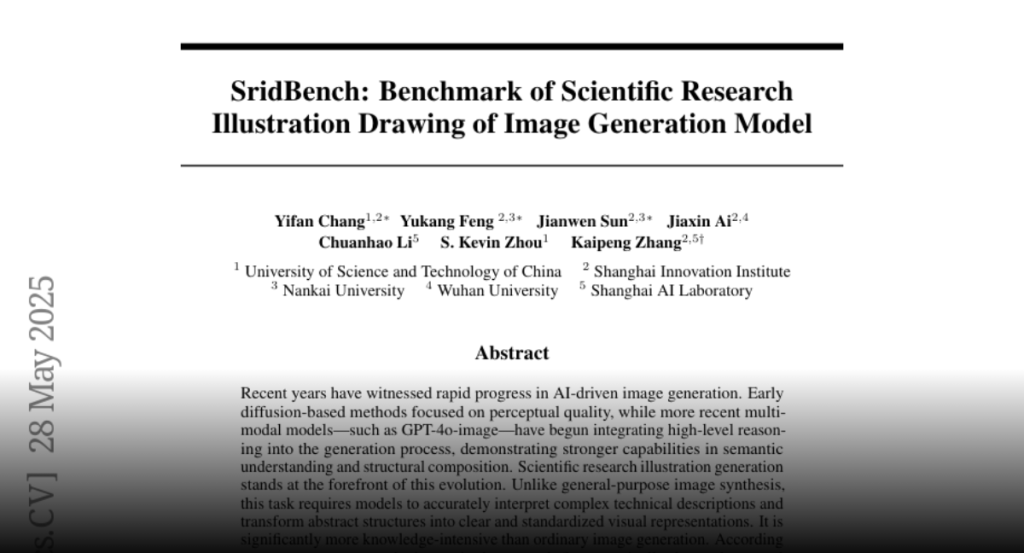The introduction of SridBench, a benchmark for scientific figure generation, reveals that current top-tier models, such as GPT-4o-image, fall short in semantic and structural accuracy compared to human performance, underscoring the need for more advanced multimodal reasoning-driven visual generation.
Recent years have seen rapid advances in AI-driven image generation. Early
diffusion models emphasized perceptual quality, while newer multimodal models
like GPT-4o-image integrate high-level reasoning, improving semantic
understanding and structural composition. Scientific illustration generation
exemplifies this evolution: unlike general image synthesis, it demands accurate
interpretation of technical content and transformation of abstract ideas into
clear, standardized visuals. This task is significantly more
knowledge-intensive and laborious, often requiring hours of manual work and
specialized tools. Automating it in a controllable, intelligent manner would
provide substantial practical value. Yet, no benchmark currently exists to
evaluate AI on this front. To fill this gap, we introduce SridBench, the first
benchmark for scientific figure generation. It comprises 1,120 instances
curated from leading scientific papers across 13 natural and computer science
disciplines, collected via human experts and MLLMs. Each sample is evaluated
along six dimensions, including semantic fidelity and structural accuracy.
Experimental results reveal that even top-tier models like GPT-4o-image lag
behind human performance, with common issues in text/visual clarity and
scientific correctness. These findings highlight the need for more advanced
reasoning-driven visual generation capabilities.

